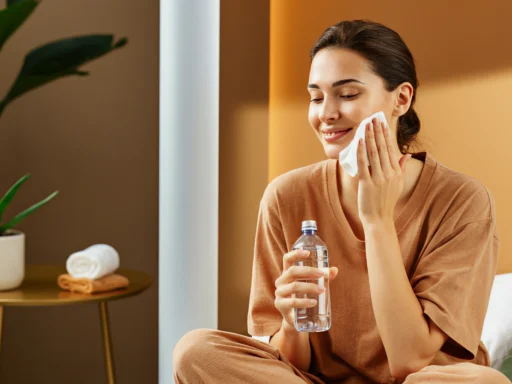When it comes to achieving that glowing, sun-kissed look, alternatives like spray tans have skyrocketed in popularity. But the question remains, are spray tans safe? Many health-conscious individuals and beauty enthusiasts are seeking answers before making spray tanning part of their routine. This blog will unravel the science, safety aspects, and best practices you need to know for an informed decision.
- What Happens During a Spray Tan
- Are Spray Tans Safe Exploring the Main Ingredient DHA
- Skin Health First What Dermatologists Say About Spray Tans
- Spray Tan vs Tanning Bed and Sun Exposure Comparing the Risks
- Potential Risks Who Should Be Cautious
- Finding Safe Spray Tan Formulas
- How Often Can You Spray Tan Without Risks
- Pro Tips for Safe and Effective Spray Tans
- Final Thoughts
- Frequently Asked Questions (FAQs)
What Happens During a Spray Tan
A spray tan works by applying a fine mist of sunless tanning solution onto your skin. The active ingredient in this solution, Dihydroxyacetone (DHA), is a sugar-derived compound that reacts with dead skin cells on the skin’s surface. This interaction creates a temporary darkening effect, mimicking a natural tan.
Tanning doesn’t go deeper than the outermost layer of your skin. If you prepare your skin well, those little dots will stay visible for around a week before disappearing on their own. This process gives the basics needed to judge the safety and efficiency of a drug.
Fun Fact
Think of DHA as the magic chef in your kitchen, “baking” your dead skin cells to create that perfect caramel-colored finish!
Are Spray Tans Safe Exploring the Main Ingredient DHA
The centerpiece of any spray tan solution is DHA. This ingredient can be either naturally derived (from sources like sugar beet or cane) or synthetically made. While the FDA has approved DHA for external use, it’s crucial to avoid inhaling or ingesting the mist during the spray tanning session.
What Does Science Say?
- Studies, including those from the U.S. National Library of Medicine, show that DHA is generally safe when used as directed.
- However, overuse or careless application could cause dry skin or irritation for some individuals.
While synthetic DHA is effective, clean beauty advocates often lean toward naturally derived DHA for its softer approach to skin health. Reviewing labels is a smart way to ensure you’re opting for high-quality formulas.
Skin Health First What Dermatologists Say About Spray Tans
Dermatologists generally agree that spray tans are significantly safer than prolonged sun exposure or tanning beds. Dr. Erin Gilbert, a New York-based dermatologist, states, “Spray tans offer a harm reduction strategy for those looking for a tan without the UV damage associated with traditional tanning methods.”
Experts say that by exfoliating and moisturizing regularly, you can lower your chances of irritation or unequal foundation application. Dermatologists also recommend patch testing spray tan formulas if you have sensitive or allergy-prone skin.
Spray Tan vs Tanning Bed and Sun Exposure Comparing the Risks
When choosing between spray tans, tanning beds, and sun exposure, spray tans emerge as the most skin-friendly option. Here’s a direct comparison to help you weigh the pros and cons of each:
Spray Tan
- No UV exposure
- Non-carcinogenic when applied correctly
- Temporary and customizable
Tanning Bed
- Intense UV radiation exposure
- Increased risk of skin cancer
- Accelerated aging and potential for sunburn-like effects
Sun Exposure
- Natural vitamin D boost (but manageable through supplements)
- Risk of skin cancer and sunburn
- Long-term sun damage to skin
For health-conscious beauty consumers, spray tanning is clearly the safer alternative.
Potential Risks Who Should Be Cautious
While spray tans are generally safe, some people may need to exercise extra caution.
Sensitive Skin
Individuals with sensitive skin may find that certain spray tan ingredients cause irritation. Opt for hypoallergenic and fragrance-free formulas to reduce risk.
Asthma and Allergies
The fine mist used during the application process might aggravate asthma or respiratory allergies. Wearing nose filters and goggles can mitigate these risks.
Frequent Tanners
Over-application of spray tans without proper skin hydration can lead to dryness and uneven patches. Following recommended frequency guidelines minimizes these effects.
Finding Safe Spray Tan Formulas
When selecting a spray tan formula, prioritize clean, high-quality ingredients for an optimal experience.
Ingredient Checklist
Natural DHA: Derived from sugar cane or beets.
Fragrance-Free: Reduces risk of irritation.
Moisturizers: Look for ingredients like hyaluronic acid or aloe vera.
No Parabens or Harsh Preservatives: Ensures a gentle experience for your skin.
Pro tip: Check product labels and consult your salon for organic or vegan-certified tanning solutions.
How Often Can You Spray Tan Without Risks
Wondering if there’s such a thing as too much tanning? Experts recommend limiting spray tan sessions to twice a month to maintain results without over-layering product buildup on your skin.
Over-tanning can lead to clogged pores or uneven pigmentation. By giving your skin recovery time between tans, you can strike the perfect balance between safety and glow.
Pro Tips for Safe and Effective Spray Tans
First-timers, take note! Prepping your skin and caring for your tan ensures the best, safest results.
Before Your Spray Tan
1
Exfoliate 24 hours before your appointment to remove dead skin cells.
2
Skip heavy moisturizer or oil-based products on tanning day to allow better absorption.
After Your Spray Tan
1
Wear loose, dark clothing to prevent smudging.
2
Avoid water, sweat, or swimming for at least 8-12 hours post-application.
3
Keep your skin hydrated with a lightweight, fragrance-free moisturizer.
Following these simple steps ensures a flawless tan while keeping your skin happy and healthy.
Final Thoughts
Are spray tans safe? With accurate application and good products, spray tans safely help you get a sun-tanned look without facing the risks that UV rays cause. Choose only high-quality skincare products, adhere to industry tips and decide what’s best for your skin type and needs.
Glow confidently, and feel free to share your spray tanning tips or favorite products in the comments below.
Frequently Asked Questions (FAQs)
No, spray tanning solutions do not contain UV radiation, which is the primary cause of skin cancer.
No, DHA reacts only with the outermost layer of dead skin cells and does not penetrate deeper layers.
It’s best to wait 8-12 hours before swimming or sweating to ensure the tan sets properly.






